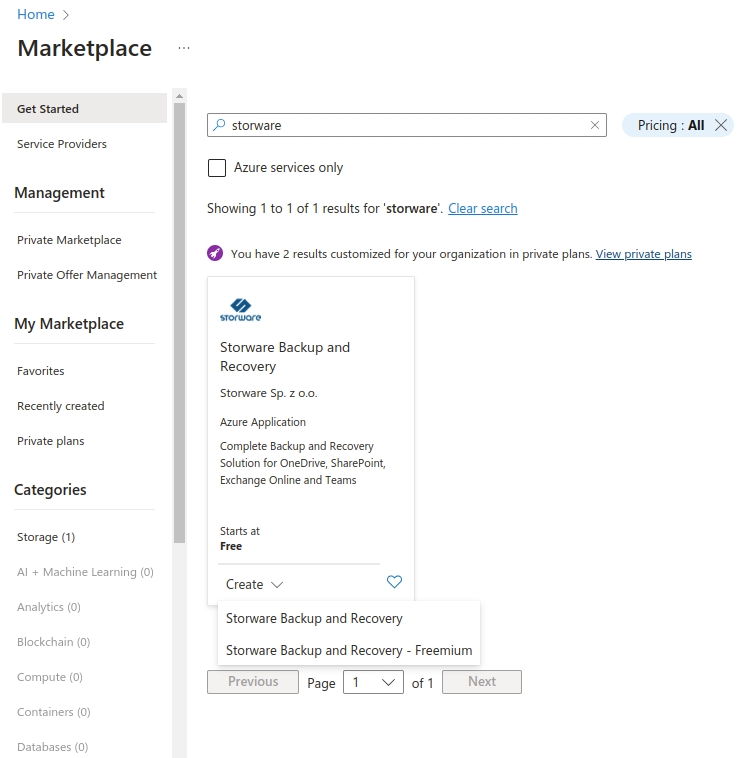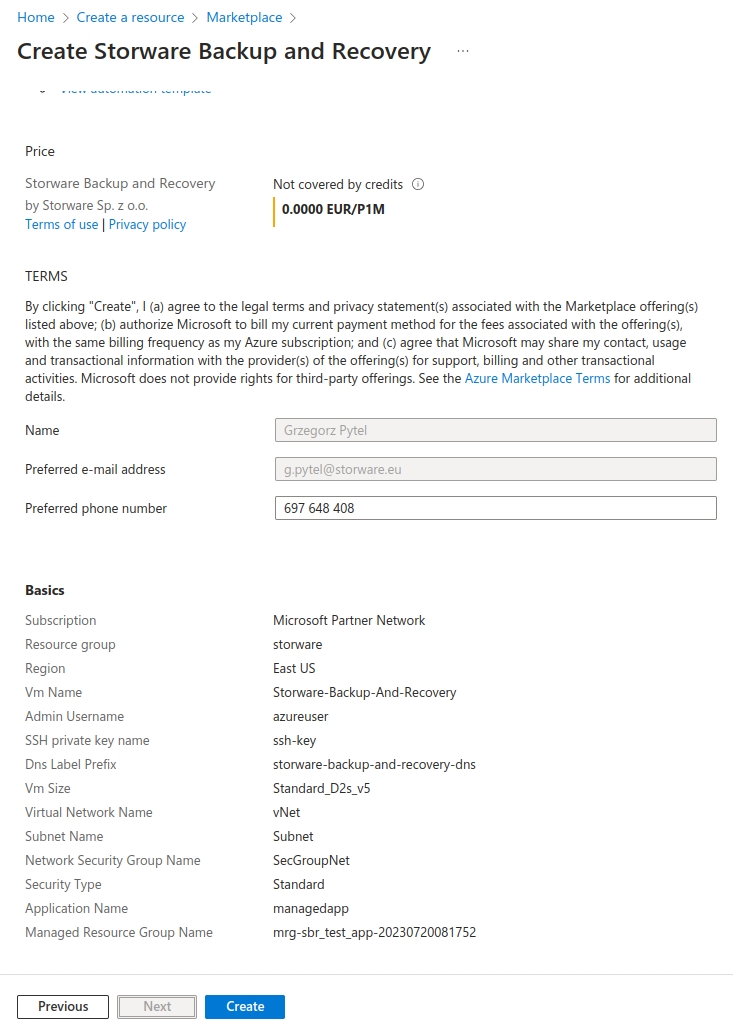Deployment in Microsoft Azure
Storware Backup and Recovery for Azure is provided to you as an IaaS solution - Azure Managed Application which deploys: managed application in chosen Resource Group, a new Resource Group with Storware Virtual Machine and other resources inside.
Prerequisites
Check enabled Azure Resource providers and user permissions
The following Resources providers must be enabled for your Azure subscription:
Microsoft.Resources
Microsoft.Solutions
The user account used to deploy Storware Backup and Recovery must have assigned at least a Contributor role at the subscription level (Owner role is recommended).
Azure Managed Application deployment
Login to your account at https://portal.azure.com, at the home page click Create a resource button.

Using the search bar search for the Storware Backup and Recovery offer, click Create and choose your offer.

Fill up the configuration form, choose your Azure Subscription and Resource Group where the new Managed Application will be created.
Region - a region where new resources will be deployed.
Vm name - the name of Storware VM.
Admin Username - username for the VMs operating system.
Authentication Type - choose between password-based or ssh key-based authentication. For password-based you need to provide the password, for key-based you can generate a new ssh key, use the key stored in Azure or provide the public key that you are already using.
Dns Label Prefix - dns name which will be used together with Azure domain (e. g. storware.eastus.cloudapp.azure.com).
Vm size - the size of the VM, default is Standard D2s v5 and it shouldn't be changed to the smaller size.
Virtual Network Name, Subnet Name, Network Security Group Name - the names of newly created resources.
Security Type - leave Standard.
Application name - the name of the managed application.
Managed Resource Group - the name of the newly created Resource Group for the resource of the Storware VM.

Complete the configuration and click Review + create button.

Review your configuration and click Create. Now new resources will be deployed to your Azure subscription.
Post-deployment configuration
After properly deploying Storware VM into Azure you need to open TCP port 8181 to be able to reach Storware Backup and Recovery Web UI. To add the Inbound port rule go to the VM details, and from the lefthand menu choose Networking, click Add inbound port rule and configure the security rule for TCP port 8181 according to your security policies.
The default Storware deployment comes with the Public IP address attached to the VM which can be used for management and connecting additional resources from outside Azure infrastructure.